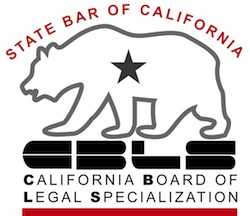Liens in bankruptcy have an uncertain fate. While most liens survive a bankruptcy discharge, some liens get wiped out. Think of mortgages, tax liens, and judgment liens. Each of them is a lien, but some get different treatment in bankruptcy. Some liens can even be reduced or eliminated . Lien basics A lien gives the […]
The Biggest Lie About Bankruptcy
The claim that you lose everything in bankruptcy is, flat out, the biggest lie about bankruptcy. Read anything about Chapter 7 and you get, “Your possessions are sold in Chapter 7 bankruptcy.“ It’s a liquidation proceeding and your stuff will be sold to pay creditors, the lie goes on. No wonder people are scared off […]
Going To Court In Your Bankruptcy Case
Every bankruptcy debtor must go to court in their bankruptcy case. It’s usually the first and only time that your personal appearance is required. And these days, your “personal appearance” is by Zoom. What’s the point of going to court The first meeting of creditors has two basic purposes: to have the debtor validate the […]
When Can I File Bankruptcy Again
Remember the old high school cheer: two, four, six, eight, who do we appreciate? Turns out, that’s not just a cheer, it’s shorthand for the rule on when you can file bankruptcy again. And it points out that when you can file again depends on what kind of bankruptcy you filed last time. Here’s how […]
Getting Excused From Bankruptcy’s Means Test
You can skip the bankruptcy means test without claiming your dog ate your homework. If your debt is not “primarily consumer debt”, you don’t have to pass the means test to file bankruptcy. So, you need to total up the consumer debt you have and compare it to the rest of your debts. Don’t miss […]
Out of Luck If You Skip A Creditor?
So, you slipped up and left a creditor out of your bankruptcy schedules. Can you add an omitted creditor after the fact? In the fateful words of a careful lawyer, it depends. Depends on when the amendment is made and what chapter you’ve filed. And the effect of adding a creditor varies. Let’s walk through […]
The Real Money Rules Before Bankruptcy
Thinking about filing bankruptcy? Folk wisdom supplies many “rules” about the period leading up to actually filing bankruptcy: This kind of thinking will have you frozen in time and space like this insect in amber. Only, this folk “wisdom” is all wrong. Here’s how to manage money before filing without messing up your right to […]
Bankruptcy Without A Discharge: Why Chapter 20 Works
What does a Chapter 13 bankruptcy get you if it doesn’t get you a discharge? Lots, actually. It’s complicated. Powerful, but complicated. Let’s see how all the parts interact when your Chapter 13 is filed before you’re eligible for a discharge. Law limits discharge The bankruptcy code doesn’t limit when you can file bankruptcy; it […]
Does THIS Violate My Bankruptcy Discharge?
When creditors contact you after your bankruptcy, you need to know what actions violate the discharge, and which are permitted by law. Having been through the financial wringer and having been proactive to get out from under old bills, you hope for a tranquil and prosperous life after bankruptcy. When creditors violate the discharge, they […]
Six Tips For A Worry-Free Bankruptcy
What happens after filing bankruptcy ? Your bankruptcy case is filed. After you’ve assembled all the paper, after you’ve answered endless lawyer questions, and after you’ve filed all the bankruptcy schedules in your case with the court. what do you need to do now? Actually, relatively little happens after you’ve filed your bankruptcy. The heavy […]
- « Previous Page
- 1
- 2
- 3
- 4
- 5
- …
- 11
- Next Page »










